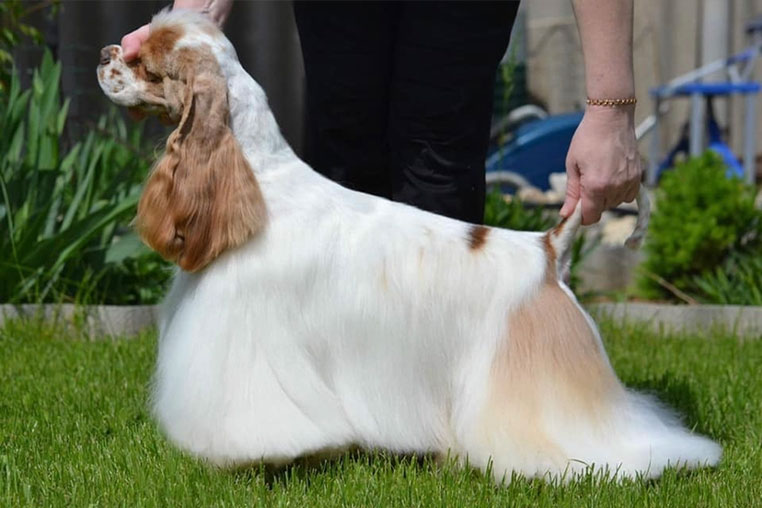Cocker Spaniel potty training should be high up on your priority list whether you are a first-time or seasoned puppy parent. One of the most frustrating events of having a new puppy is seeing them pee inside the house, which makes potty training a crucial task to teach your cocker.
Your cocker spaniel is always eager to please, and its nature can help you potty-train your pup without much headache. They are gentle, sociable, and respond well to reward-based techniques that can prevent soiling accidents in your home.
Why do cockers pee inside the house?
There’s no special reason as to why your cocker spaniel puppy might have peeing incidents—they’re basically like babies who can’t control the urge to go to the toilet. Fortunately, dogs are capable of learning how and where to pee correctly at a fast pace.
However, puppies can continue to have soiling accidents during the training process because they can smell traces of urine in the house. Dogs have a heightened sense of smell that lets them catch the scent of ammonia in pee. Even if you thoroughly cleaned up the soiled area, some household cleaners have ammonia in the formula, tempting your pup to wee at that same area again.
2 Rules for potty training cocker spaniels
Cocker spaniels are generally active, which means keeping them calm could be a challenge when house training like potty training or crate training for Cockers—but it’s not impossible! Are cocker spaniels easy to potty train? While not every pup is the same, you can follow these guidelines to make potty training a hassle-free process.
Look for possible timing
You can’t tell exactly when your cocker will want to urinate, but their toilet timings are predictable. The secret to cocker spaniel house training is to build a routine based on those needs.
Your cocker spaniel should be taken outside once hourly or so. Here are instances when you should take them outside:

- As soon as they wake up
- Ten minutes after you give them a drink
- About 15 to 20 minutes after they eat
- After every session of exercise, play, or training
- After any exciting or stressful event such as scares or unexpected loud noises
Watch out for possible signs or behaviors
Your cocker spaniel may display tiny behaviors indicating that they’re about to pee. You can watch out for these tell-tale signals once you notice any of them and take them outside:
- Sniffing the floor intensely
- Squatting
- Circling or turning in a little, tight circle
- Holding their tail high
- Whimpering or crying
- Hanging around at the door or scratching the carpet
6 Steps for Cocker spaniel potty training: Teach it to pee outside
Your beloved cocker spaniel needs to be kept healthy and happy, and part of that is teaching them how to relieve themselves properly. Here is a simple-to-follow guide on how to potty train to stop Cocker Spaniel peeing inside home.
Step 1: Choose an outdoor pee spot
Choose the best spot outdoors (preferably a quiet corner of the yard) where they can eliminate distractions. You need to bring your cocker spaniel to that area every time they want to pee. You may also consider a sheltered spot so that you can continue training even in inclement weather.
When picking a location, it’s best to consider what your pooch prefers, whether it’s a grassy surface, mulch, or soil to eliminate on.
Step 2: Guide them to the spot
When you see your cocker is peeing in the bed or about to pee indoors, distract them by creating a loud sound like a clap, and then bring them outside on a sturdy dog leash if possible. You may also pick them up if they are small enough so that it’s impossible for them to void or defecate in your home.
Take them to their elimination spot outdoors to reinforce cocker spaniel potty training. You should refrain from punishing your cocker spaniel if they ever eliminate indoors because they don’t take well to a negative training process.
Step 3: Make the journey comfortable for them

When taking your dog to the bathroom spot, you can leash them but make sure that they remain comfortable. Dress them up in a sweater or raincoat during rainy days and bring small treats with you. However, don’t tease them with the treats before they properly eliminate them to avoid distracting them.
Step 4: Teaching potty time commands
Choose a word to signal to your cocker that it’s time to go outside to pee. You can say ‘Potty’ and wait for them to eliminate. Make sure to praise your pup after they succeed in the task and offer them a treat. Since cockers are an active breed, they will have a give desirable response to reward-based training.
Step 5: Give them time to urinate
If your pup did not pee, you can wait another 15 minutes to take them again to the outdoor spot. Take note of the tell-tale signals that your cocker is ready to eliminate and leash them if possible so that you can supervise them properly. You may also put them in their crate while waiting to bring them outside once more.
Step 6: Creating a feeding schedule is key
Create a proper puppy schedule for your cocker spaniel and stick to it as religiously as possible. Doing so can help you predict their toilet break timings, so your pup won’t need to hold their urine or have soiling accidents inside your home.

Leave A Comment